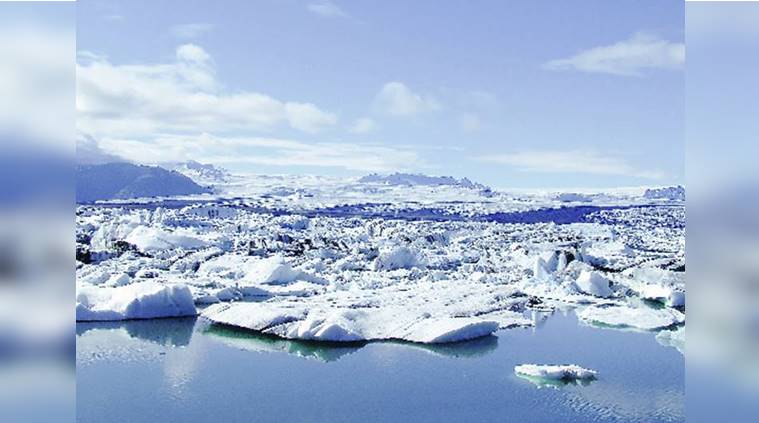 Iceland is little like any other island.
Iceland is little like any other island.
It’s tough to ignore a place that calls itself Iceland, and, if that part of the world suddenly finds its exchange rates falling, it becomes all the more irresistible, particularly to intrepid travellers. Back in 2012, with a nine-month-old well-travelled baby, we packed our bags and headed to the other side of the Artic Circle.
Iceland is little like any other island. The whole country feels more like a national park or a petri dish of the earth’s constant evolution. There is dramatic volcanic and geological activity happening all over and one gets to see geysers, lava rocks and glaciers everywhere. In fact, Iceland should really be two islands by now, only volcanic eruptions fill in the gap enough to “glue” together the plates that tectonic movements pull apart.
Much research later, we decided to spend our time in the capital, Reykjavik, and the southern part of the island (a good 100 km below the Arctic Circle). We flew into Reykjavik through Helsinki, and decided to explore the country driving ourselves around. The capital city is a pretty and friendly town with little houses, colourful rooftops and a church whose architecture reflects the local geology of volcanic lava formations. With a bit of snow, it is a landscape that can put to shame illustrators of fairy tales. The city parties hard at night, and since there are months that the sun never really sets and months that the sun doesn’t really show up, pub hopping till 5 am and candle-lit breakfasts are a norm. We did neither with a little bub in tow. Instead, we drove off to the south coast followed by the Golden Circle.
The southern coast drive starts off with the incredibly pretty waterfalls of Seljalandsfoss and Skogafoss, a two-hour drive from Reykjavik. These are gigantic falls with so much water spray that one is guaranteed to get wet. We had come prepared with our rain covers from our Niagara trip, and picked up an industrial strength rain suit for the daughter from a charming little shop. They all came in very handy in a hike to a cave behind Seljalandsfoss, which offered a rare behind-the-scenes view of the waterfall.
From water to ice, we headed to the Vatnajokull National Park further south. Currently vying for inclusion in the Unesco world heritage sites, the park is house to glaciers, lakes and lava fields with a geography that changes often. Driving around in the area was gorgeous. Glacial tongues poked out invitingly, tempting us to hike closer. Even in early summer, the air was crisp and temperatures ranged around 15 degree centigrade. We even got to see a rare full double rainbow on the drive!
Finally, at Jokulsarlon, we got to see the surreal Iceland I had been expecting all along. Jokulsarlon has glacial lakes and black pebble beaches that are studded with, wait for it, icebergs! Unlike any other island experience in the world, here we were, dressed in three layers from top to toe, smothered in sunscreen, picking up chunks of ice on the black beach — I had to pinch myself to believe it. Afterwards, we headed into the glacier itself for a snowmobile ride, suited up in snowsuits. A few snow fights and snow angels later, we headed back the base camp for hot soup and warm beds.
The next day, after a quick stop in Skaftafell to hike around and explore the turf houses that look like they are half underground, we moved onto to Vik. Vik is a remote seafront village that sits in the shadow of an unpronounceable glacier, which covers the Katla volcano. Geographic tongue-twisting aside, the place has a beautiful black beach, basalt rock formations with appropriate troll legends to add a bit of cultural magic, and is home to the colorful penguin cousins — the puffin birds. We spotted quite a few nesting in the caves by the beach.
The next stop for us was the tourists’ delights of the Golden Circle — Gulfoss falls and the Geysir region. The Great Geysir is an unique Icelandic experience and the word “geysir” is the source of the word “geyser”. The Gullfoss — a two-tiered waterfall that is the Hvita River — falling 32m down into a gorge, is Europe’s answer to the Niagara Falls. Where it trumps Niagara, is that in winter the whole waterfall is a glistening mass of water frozen in motion.
We gave the Thingvellir National Park a miss in favour of a last pitstop to experience the Blue Lagoon Spa on our way to the airport. The geothermal waters, heated to a toasty 38-40C, are rich in silica and have therapeutic properties. Healing or not, floating in warm milky blue waters surrounded by ice-covered lava fields was a surreal Icelandic experience that we were loathe to miss. After all, Iceland sets up a truly spectacular nature show for those who care, where staring into the sky one could end up spotting an elusive Aurora Borealis, or, on a simple trek, could tread on ice or lava. No wonder, Iceland is the home of the Huldufolk — elves and fairies who supposedly populate the Icelandic countryside and who are only real to those who truly believe in magic.